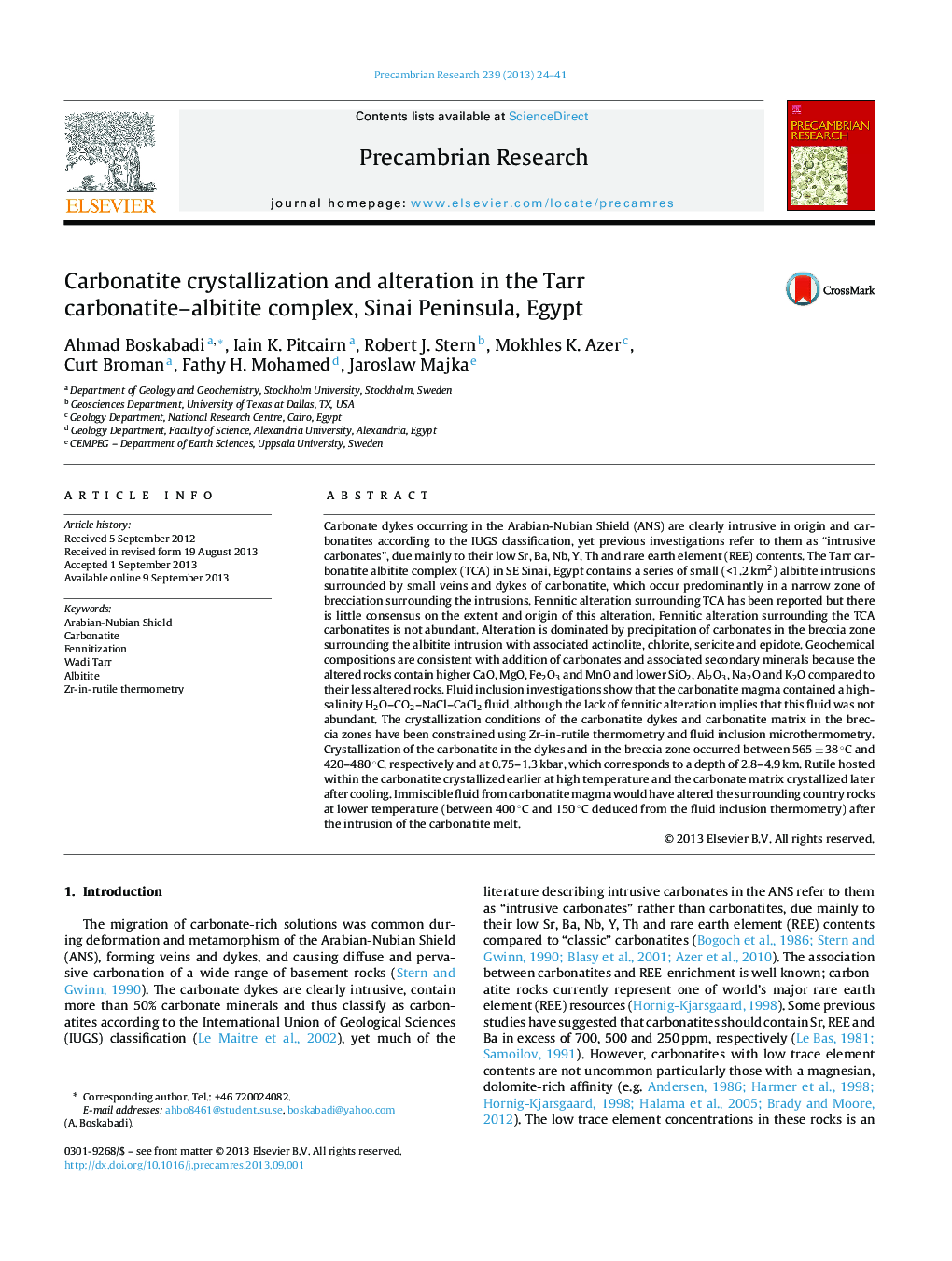| کد مقاله | کد نشریه | سال انتشار | مقاله انگلیسی | نسخه تمام متن |
|---|---|---|---|---|
| 4723128 | 1639635 | 2013 | 18 صفحه PDF | دانلود رایگان |
• Carbonate dykes in TCA should be classified as carbonatite according to the IUGS classification.
• Fennitic alteration is not abundant and is dominated by precipitation of carbonate, actinolite and chlorite in the breccia zone.
• Crystallization of the carbonatite occurred between 565 ± 38 °C and 420–480 °C at a depth of 2.8–4.9 km.
• Exsolution of high-salinity fluid during crystallization of the carbonatite caused localized alteration but not fennitization.
Carbonate dykes occurring in the Arabian-Nubian Shield (ANS) are clearly intrusive in origin and carbonatites according to the IUGS classification, yet previous investigations refer to them as “intrusive carbonates”, due mainly to their low Sr, Ba, Nb, Y, Th and rare earth element (REE) contents. The Tarr carbonatite albitite complex (TCA) in SE Sinai, Egypt contains a series of small (<1.2 km2) albitite intrusions surrounded by small veins and dykes of carbonatite, which occur predominantly in a narrow zone of brecciation surrounding the intrusions. Fennitic alteration surrounding TCA has been reported but there is little consensus on the extent and origin of this alteration. Fennitic alteration surrounding the TCA carbonatites is not abundant. Alteration is dominated by precipitation of carbonates in the breccia zone surrounding the albitite intrusion with associated actinolite, chlorite, sericite and epidote. Geochemical compositions are consistent with addition of carbonates and associated secondary minerals because the altered rocks contain higher CaO, MgO, Fe2O3 and MnO and lower SiO2, Al2O3, Na2O and K2O compared to their less altered rocks. Fluid inclusion investigations show that the carbonatite magma contained a high-salinity H2O–CO2–NaCl–CaCl2 fluid, although the lack of fennitic alteration implies that this fluid was not abundant. The crystallization conditions of the carbonatite dykes and carbonatite matrix in the breccia zones have been constrained using Zr-in-rutile thermometry and fluid inclusion microthermometry. Crystallization of the carbonatite in the dykes and in the breccia zone occurred between 565 ± 38 °C and 420–480 °C, respectively and at 0.75–1.3 kbar, which corresponds to a depth of 2.8–4.9 km. Rutile hosted within the carbonatite crystallized earlier at high temperature and the carbonate matrix crystallized later after cooling. Immiscible fluid from carbonatite magma would have altered the surrounding country rocks at lower temperature (between 400 °C and 150 °C deduced from the fluid inclusion thermometry) after the intrusion of the carbonatite melt.
Journal: Precambrian Research - Volume 239, December 2013, Pages 24–41
